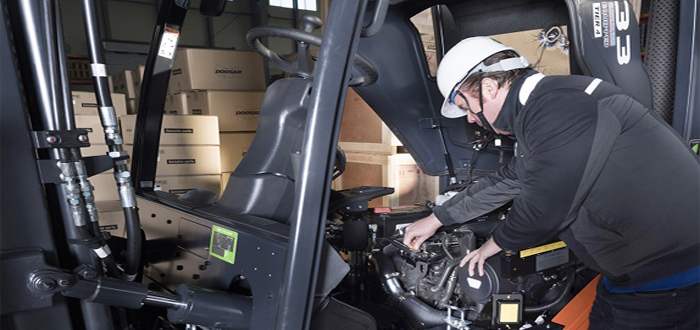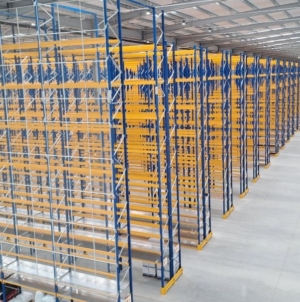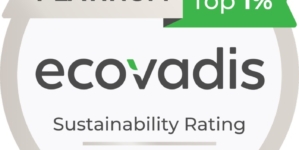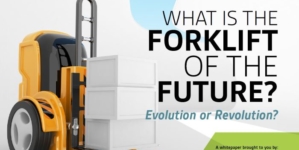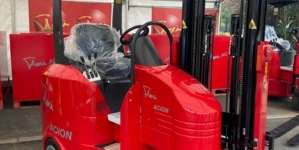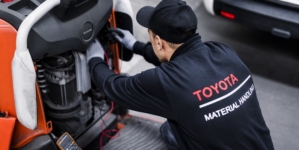-
Nutrivend selects Forterro’s Orderwise to support online expansion and streamline operations - April 11, 2025
-
ARROWXL LAUNCHES AMBITIOUS ZERO WASTE ROADMAP - April 8, 2025
-
THE BCMPA’S NEW CAMPAIGN DRIVES OUTSOURCING SUCCESS IN Q1 - April 7, 2025
-
BLACKOUT TECHNOLOGIES TARGETS TELEMATICS-INTEGRATED MOBILE DEVICE BLOCKING TO COMBAT SMARTPHONE DISTRACTION - April 1, 2025
-
Sparck Technologies awarded Royal designation - March 27, 2025
-
OpenADR Alliance announces first OpenADR 3.0 certified products with EVoke Systems, E.ON Energy and Universal Devices - March 25, 2025
-
Growing fulfilment and contract packer appoints new Managing Director - March 25, 2025
-
When is it time to invest in a WMS? Understanding the key trigger points - March 25, 2025
-
eCapital helps Vantage Recruitment on its journey to financial success - March 24, 2025
-
Hugo Beck Celebrates 70 Years of Packaging Innovation with Open House Events - March 20, 2025
Are you ready for Euro-Stage V.
Emission standards for diesel forklift trucks are about to get a lot stricter and, for the first time, LPG trucks are affected too. What are the implications for buyers planning their future strategic fleet purchases? By Paul Watson, UK Commercial Director at Doosan Industrial Vehicles UK Ltd.
As of 1st January 2019 new diesel and LPG powered forklift trucks sold in the European Union will start to have to comply with the world’s toughest emission standards for non-road vehicles, Euro-Stage V. Although the UK is set to exit the EU shortly after its introduction, the standards will almost certainly be adopted here too.
So what will this mean for those planning their forklift truck fleets? Should buyers be reconsidering their fuel or power options? Possibly, but there are a number of important considerations to take into account.
The headline news is that limits on emissions of particulate matter are to be reduced by a further 40% under the new regulations – taking the current Stage IV A limit of 0.025 g/kWh of soot down to 0.015g/kWh – and this will apply across all engine sizes. Carbon Monoxide emissions will be set at 5.0 g/kWh for all engines up to 128kW and emissions for NOx and HC will remain as currently specified.
The good news is, the Euro-Stage V standards are much clearer and simpler than the existing tiered arrangement for emission limits which are presently staggered across a range of engine power outputs: Stage lll A – less than 37kW, Stage lll B – 37kW to 81kW and Stage IV A – larger than 81kw.
However, for buyers of forklift trucks, life is about to become more complex. Under Euro-Stage V standards all IC engine forklift trucks, both diesel and LPG powered vehicles, will have to comply regardless of engine size – and that means even trucks below the current minimum threshold of 37kW.
For LPG trucks, emissions of particulate matter will not be a problem, but to eliminate nitrous oxides a three-way catalytic converter will be necessary. The good thing is catalytic converters are relatively inexpensive, require minimal maintenance and do not have to go through the lengthy regeneration processes associated with diesel particulate filters (DPFs).
The biggest impact of these new standards will fall on the diesel engine models. Most diesel forklift trucks supplied to the market presently require DPFs to comply with the current standards. With the introduction of more stringent Euro-Stage V regulations significantly more advanced DPF cleaning systems and operating regimes will be required by most manufacturers to comply, and for less sophisticated diesel engines this will mean longer periods of downtime and more expense.
As the vast majority of forklift makers do not build their own engines, the solution adopted by the industry has been, in general, to adapt ill-suited automotive engines and reduce the amount of NOx by lowering the combustion temperature using cooled exhaust gas to dilute the amount of oxygen in the combustion chamber. But, there is a big penalty. Soot is increased which requires the engine to have a diesel particulate filter fitted to prevent the soot being emitted.
As those having purchased a new forklift fitted with a diesel particulate filter will know, it has to be recharged at regular intervals. This is a lengthy process that for most users must be performed once or twice a week and requires the truck to be taken out of service and the engine to be revved at full engine RPM for about 20 minutes to half an hour, in order to burn the soot that has collected in the particulate filter. Large amounts of fuel are used in the process and the truck is not available for duty – increasing downtime and significantly impacting productivity. Then there are the costs associated with the burning of extra fuel and associated maintenance issues, not to mention the sheer inconvenience of the whole lengthy, repetitive process.
However, at present, not all diesel engines need DPF filters to comply with the current regulations. There are only a small number of forklift truck manufacturers who have diesel engines on the market that do not require diesel particulate filters to comply with the existing Euro-Stage lllB and Stage lV standards. Only a couple of them, can offer solutions across the whole range. Doosan has a full range from 2.0-tonne capacity across all diesel powered counterbalance trucks up to 25-tonnes.
Of course, with the new, stricter Euro-Stage V regulations coming into force even these manufacturers will need to further reduce emissions, and this will almost certainly require the fitting of DPFs. However, a significant point is that Doosan only needs to introduce a very small DPF to comply, as the in-house designed G2 engine is already exceptionally clean. And, importantly, tests underway on G2 engines at Doosan’s Infracore Engine Division indicate that effective cleaning of the filter takes place whilst the truck is in normal use – similar to your diesel car. So there is no costly down time.
Clearly, tightening EU regulations on carbon, nitrogen oxide and particle emissions offer strong indications as to the direction policy makers wish to take. So, as with cars and vans, is the future electric?
Electric trucks have a lot to offer. In 2016 Doosan launched a range of 48v electric trucks up to two tonnes and in early 2017 an 80v range from 2.5 to 3.5 tonnes was launched. Later in 2018 the five tonne electric series will be revamped and six, seven and eight tonne electric models will be looked at in the near future.
However, there are plenty of applications where diesel or LPG trucks offer the best solution and will continue to do so for the foreseeable future. As you might expect, much depends on the particular demands of the job, the application and the working environment.
With the introduction of these much stricter Euro-Stage V standards it makes sense to fully understand the impact these regulations will have on your future forklift truck fleet. Understanding your options at this point may help in planning your fleet purchasing strategy going forward.
As part of the $21bn Doosan engineering conglomerate, the industrial vehicle division is uniquely positioned to tap into the rich resources and ‘in-house’ expertise of Doosan Infracore’s Engine Division. Doosan are investing heavily in expanding their range of electric forklift trucks, offering powerful models capable of handling loads once only thought possible using IC engine trucks. If you are looking for expert advice on how the Euro-Stage V standards might affect your business, Doosan are well positioned to offer you a balanced view.



























